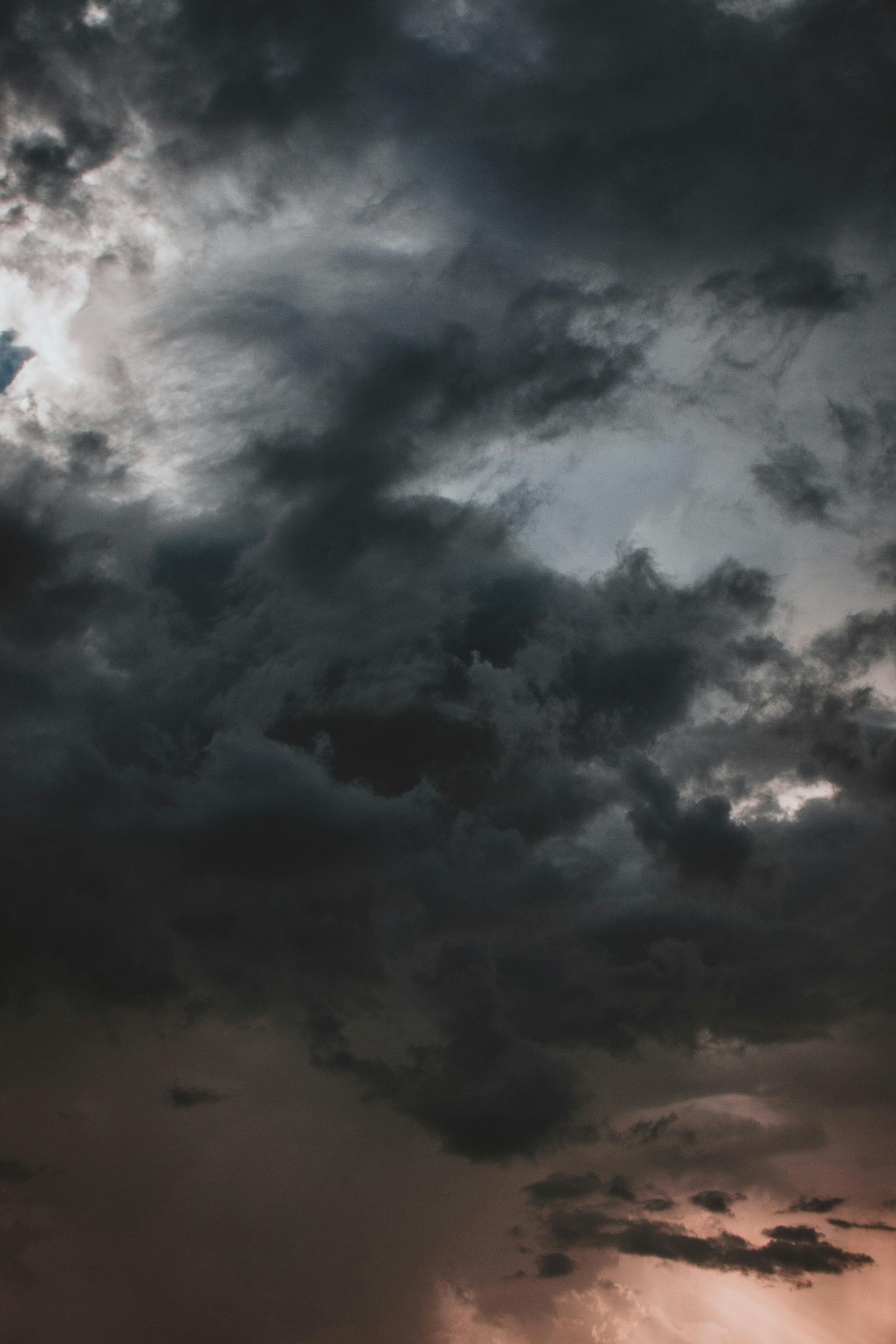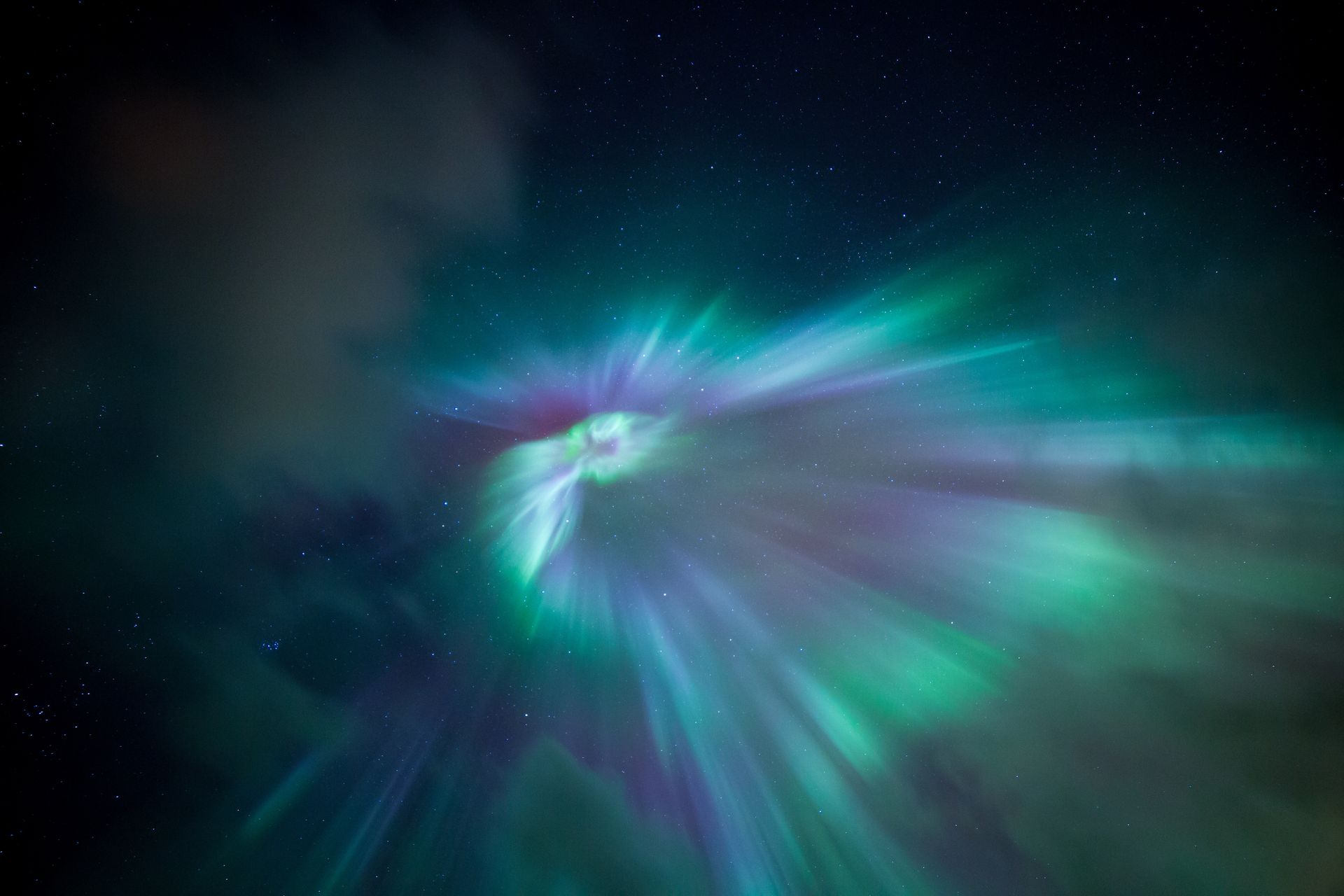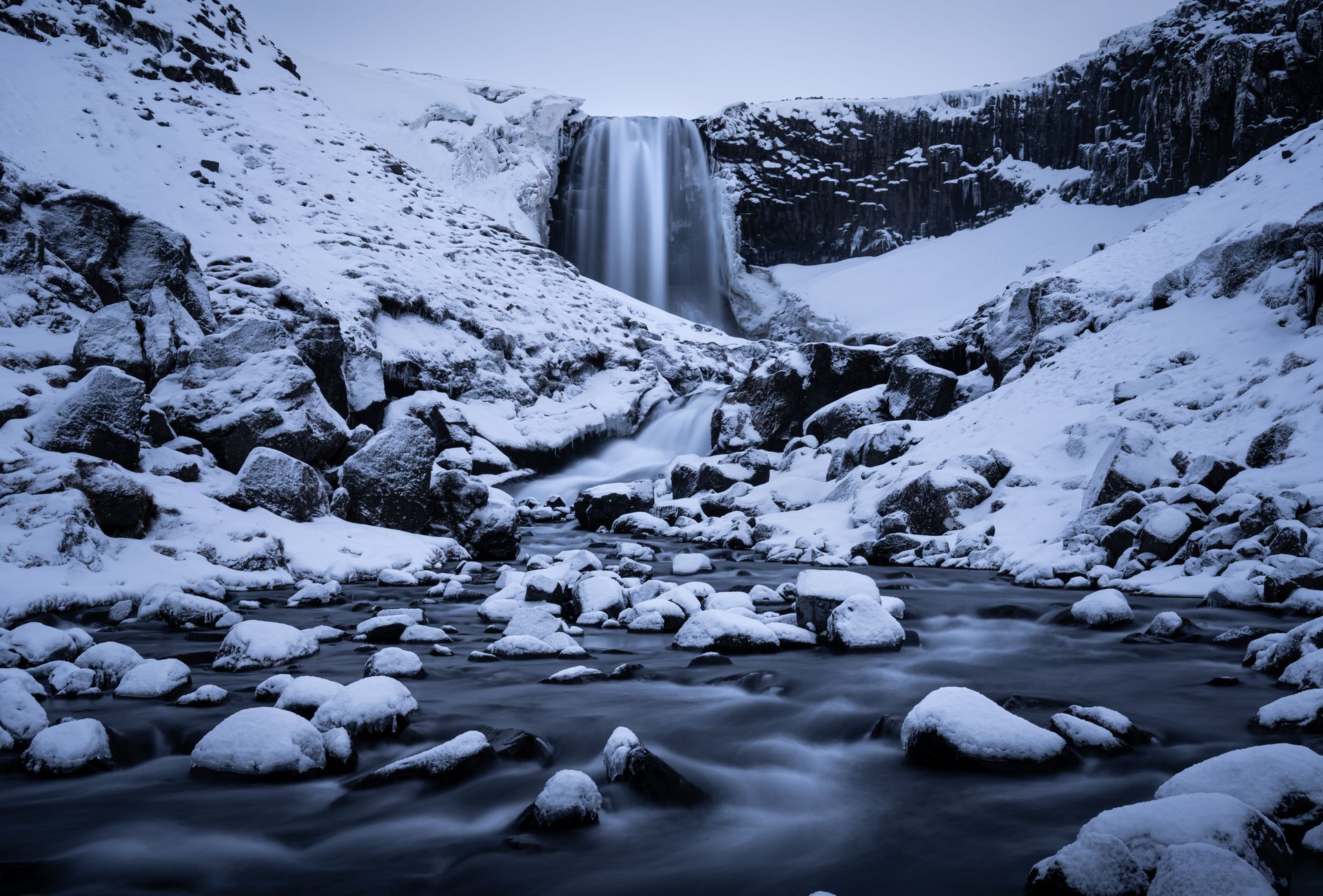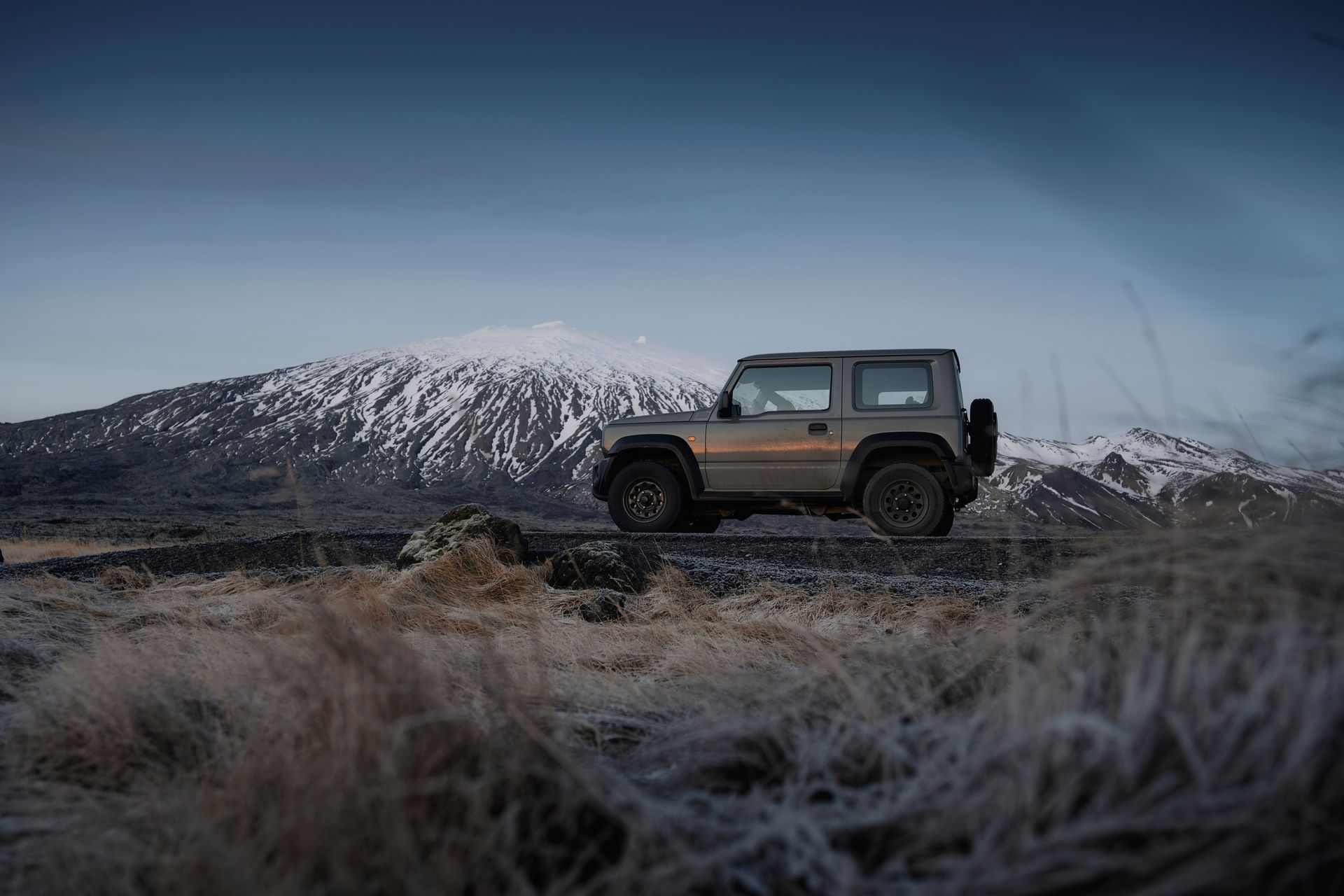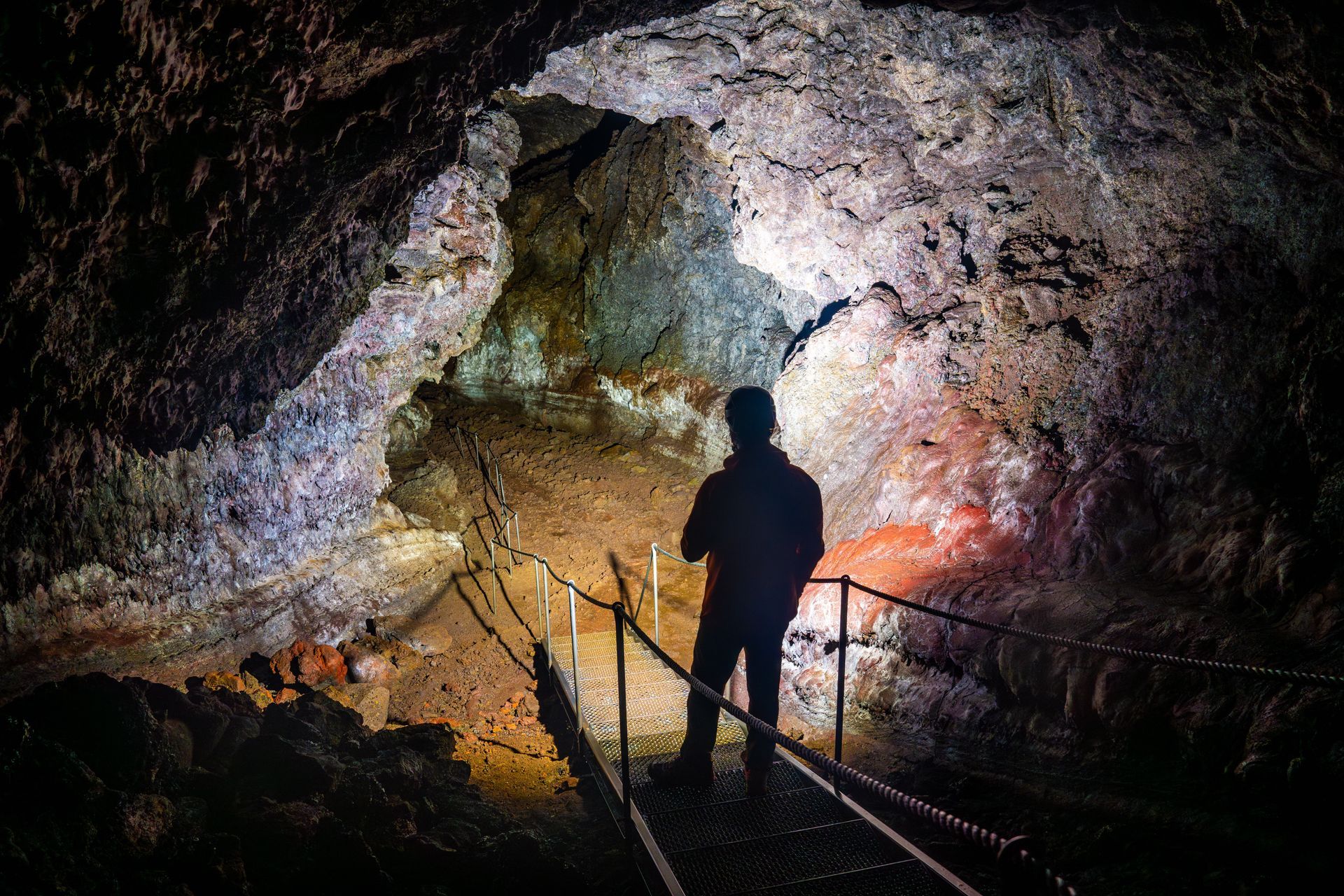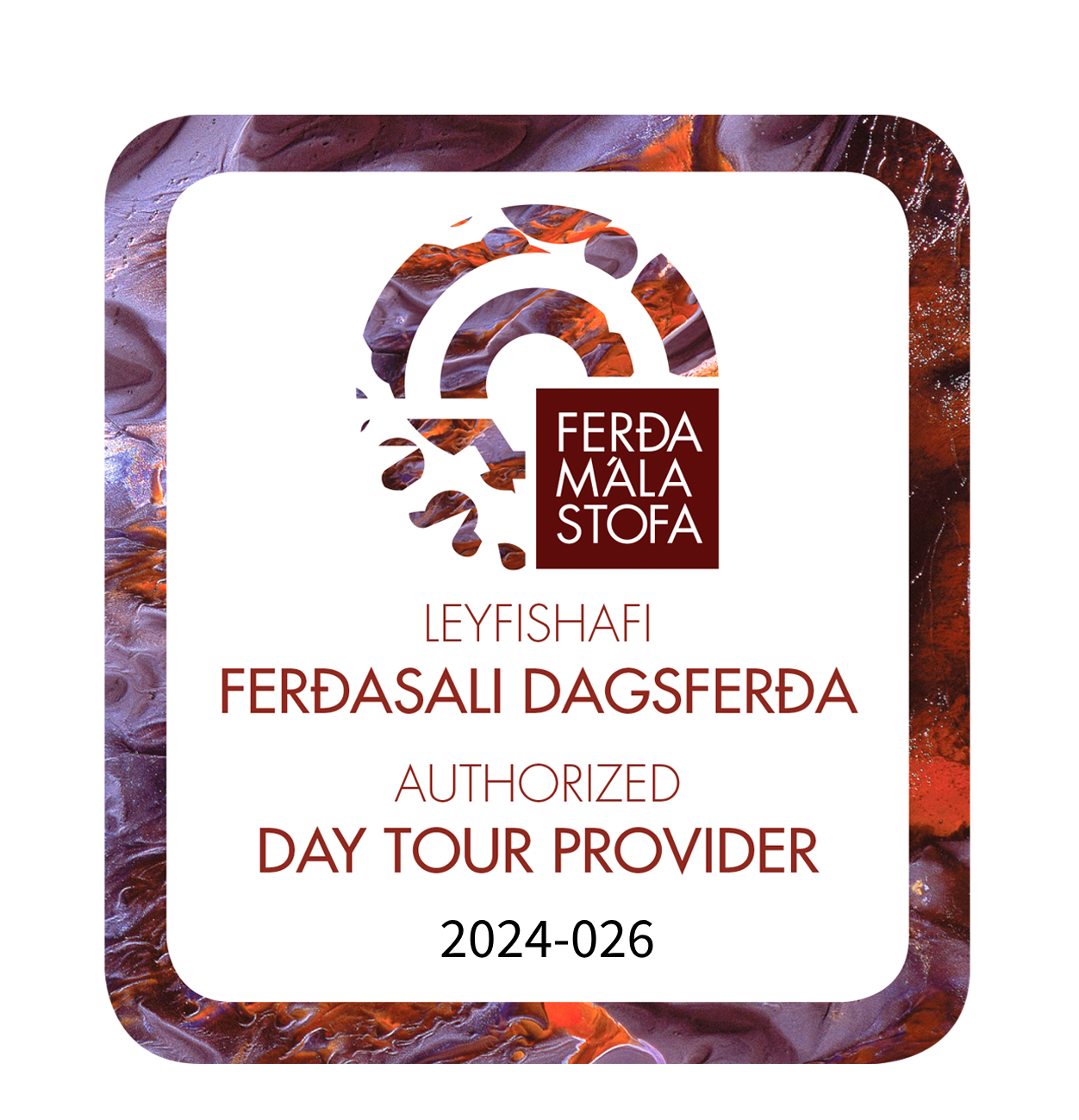Top 20 Attractions in Snæfellsnes
Our top 20 list of attractions and things to do in Snæfellsnes, West Iceland.
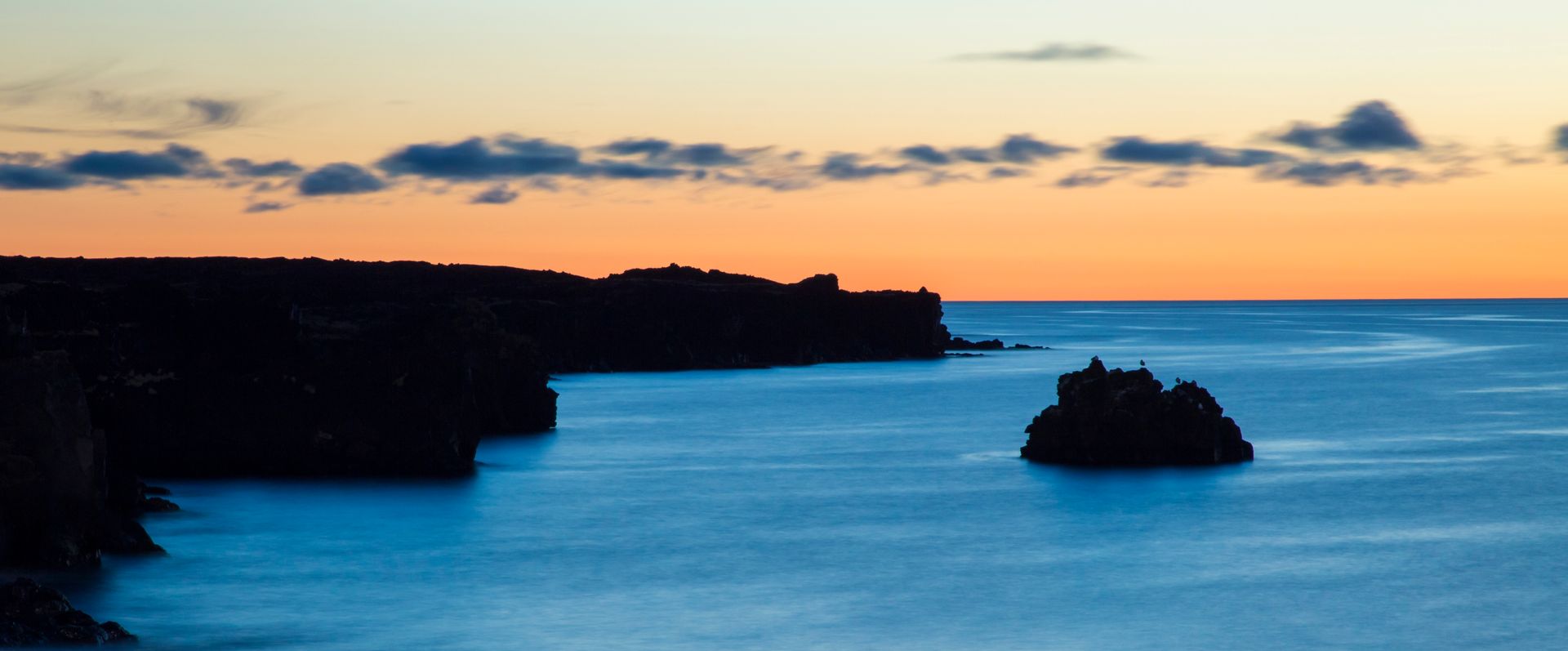
1. Snæfellsjökull National Park
Snæfellsjökull National Park revolves around the famous Snæfellsjökull volcano, which dominates the western tip of the peninsula. Even from a distance, you can spot its glacier-covered peak (though the amount of snow and ice varies depending on the time of year). This volcano is steeped in myth and folklore—Jules Verne even chose it as the entry point to the Earth’s core in his novel Journey to the Center of the Earth.
What to Do:
- Explore the dramatic landscapes, including lava fields, rugged cliffs, and scenic coastal areas.
- Drive through the park’s main routes to take in breathtaking ocean vistas and unique rock formations.
- Note that certain roads and trails may only be accessible in the summer months.
2. Vatnshellir Cave
Descend beneath the surface into the 8,000-year-old Vatnshellir Cave, an ancient lava tube located within Snæfellsjökull National Park. Guided tours are available year-round with many departures every day.
What to Do:
- Marvel at the volcanic formations and underground chambers.
- Click here to book your Vatnshellir Cave tour and secure your spot in advance, especially during the busy summer season.
3. Kirkjufell Mountain
Nicknamed “the most photographed mountain in Iceland,” Kirkjufell near Grundarfjörður is recognizable by its distinctive conical shape. It’s a standout feature of the Snæfellsnes coastline and especially photogenic during sunrise, sunset, or when adorned by the Northern Lights in winter.
What to Do:
- Visit the nearby Kirkjufellsfoss waterfall (see #4) for that perfect postcard shot.
- Enjoy the mountain’s changing colors through different seasons—summer’s midnight sun and winter’s auroras offer vastly different but equally stunning scenery.
4. Kirkjufellsfoss Waterfall
This small yet scenic waterfall lies just across from Kirkjufell Mountain, creating one of Iceland’s most iconic landscape views. Even though Kirkjufellsfoss is relatively modest in size, it makes up for it with its picturesque surroundings.
What to Do:
- Stroll around the waterfall for multiple viewpoints of Kirkjufell and the cascading waters.
- Pack a waterproof jacket, as even light mist from the falls can be chilly—especially outside the summer months.
5. Arnarstapi Fishing Village
Arnarstapi is a charming coastal hamlet boasting jagged basalt cliffs and arches teeming with birdlife. A paved walkway takes you along the shoreline, showcasing incredible ocean panoramas and dramatic rock formations.
What to Do:
- Walk the scenic trail connecting Arnarstapi to Hellnar for views of sea stacks and wildlife.
- Snap a photo with the stone monument of Bárður Snæfellsás, the mystical guardian of the peninsula.
6. Hellnar
A short distance from Arnarstapi, Hellnar is another storybook-like settlement with rocky shores and a tranquil atmosphere. Historically, it was an important fishing outpost, and remnants of that heritage remain visible.
What to Do:
- Savor a cup of coffee or lunch at Fjöruhúsið Café perched along the cliffs.
- Stroll the coastline to spot seabirds nesting along the rocky ledges.
7. Djúpalónssandur Black Sand Beach
Djúpalónssandur is a stunning black-pebble beach enveloped by dramatic lava formations. Fans of Game of Thrones might recognize some of the landscapes from filming locations in the wider Snæfellsnes region. The beach also holds four traditional lifting stones once used to test fishermen’s strength.
What to Do:
- Walk along the beach to discover remains of the British trawler Epine scattered along the shore.
- Try hefting the lifting stones if you’re curious about historical Icelandic fishing culture.
- Watch your step on the uneven terrain.
8. Lóndrangar Basalt Cliffs
Rising like towers from the North Atlantic, the Lóndrangar cliffs are majestic basalt formations shaped by volcanic activity and erosion. They serve as a haven for numerous bird species, making this a prime birdwatching spot during warmer months.
What to Do:
- Hike the footpaths leading from the main parking area to get a closer look.
- Bring binoculars for a chance to see puffins, guillemots, and other seabirds (mainly in summer).
9. Stykkishólmur
A vibrant town known for its colorful houses and waterfront views, Stykkishólmur has become a hub for travelers exploring Breiðafjörður Bay. Its old-town charm and historical buildings are well-preserved, offering a glimpse into Iceland’s rich maritime heritage.
What to Do:
- Climb Súgandisey Hill for a panoramic view of the harbor and surrounding islands.
- Wander through the quaint streets, visiting local shops and trying regional delicacies.
10. Bjarnarhöfn Shark Museum
For a taste of Iceland’s more adventurous cuisine, the Bjarnarhöfn Shark Museum is the place to learn about—and sample—fermented Greenland shark. The museum details the centuries-old tradition of curing and fermenting shark in this remote region.
What to Do:
- Hear from family members who’ve continued this practice for generations.
- Dare to sample hákarl (fermented shark) if you’re up for a unique culinary challenge.
11. Búðir Black Church
Set against a striking backdrop of lava fields and mountains, the Black Church at Búðir has become an iconic symbol of the peninsula’s stark and minimalistic beauty. It’s a popular spot for weddings and photography due to its contrast with the surrounding landscape.
What to Do:
- Capture dramatic shots of the church’s black timber frame against the rugged scenery.
- Wander the nearby sandy beach for more photo opportunities.
12. Rauðfeldsgjá Gorge
A narrow canyon that slices into the side of Mount Botnsfjall, Rauðfeldsgjá offers a hidden, moss-covered world. Adventurous visitors can venture into the gorge, where the walls often drip with meltwater and a stream flows underfoot.
What to Do:
- Wear waterproof boots or shoes you don’t mind getting wet.
- Look upward to catch a glimpse of daylight filtering through the top.
- Be careful, many accidents happen around the gorge. Rockfall, icefall and twisted ankles are a common thing at Rauðfeldsgjá.
13. Berserkjahraun Lava Field
This extensive field of jagged lava rock is known as Berserkjahraun, named after a saga involving two berserkers who built a road here. Covered in vibrant green moss during the summer, the lava formations create an otherworldly panorama.
What to Do:
- Explore via car or on foot, following marked paths to avoid damaging the delicate moss.
- Learn the local folklore tied to the region’s Viking history.
14. Eldborg Crater
Shaped like an oval fortress, Eldborg is a volcanic crater rising about 60 meters above the surrounding lava field. A moderate 2.5-kilometer hike takes you from the parking area to the crater rim.
What to Do:
- Enjoy sweeping views of the peninsula from the top.
- Wear sturdy hiking shoes, especially outside of summer when the trail may be muddy or slippery.
15. Svöðufoss Waterfall
Located not far from Snæfellsjökull, Svöðufoss is a lesser-known waterfall that offers a serene atmosphere away from busier spots. A short trail leads to the falls, rewarding visitors with a peaceful nature escape.
What to Do:
- Pack a picnic and enjoy the tranquil surroundings in summer.
- Dress warmly in cooler months, as the wind can be strong near the falls.
16. Grundarfjörður
Grundarfjörður sits under the watchful gaze of Kirkjufell Mountain. The town exudes a friendly atmosphere, with a picturesque harbor and a few local art venues.
What to Do:
- Stroll the harbor area to see fishing boats come and go.
- Check out local galleries showcasing regional artists and photographers.
17. Ytri Tunga Beach
Ytri Tunga is sandy beach known for its seal colony. During the summer, seals often lounge on the rocks, making it a favorite spot for wildlife viewing.
What to Do:
- Bring a pair of binoculars or a camera with a zoom lens to observe the seals without disturbing them.
- Visit in summer for the highest likelihood of seeing these playful marine mammals.
18. Ólafsvík
A traditional fishing town on the northern coast of the peninsula, Ólafsvík has a scenic harbor and offers easy access to nearby natural attractions. In recent years, it has also become known as a departure point for whale-watching tours.
What to Do:
- Embark on a whale-watching excursion from Ólafsvík and keep an eye out for orcas, humpbacks, and more (primarily in summer).
- Explore the town’s shops and cafés to soak up local culture.
- Click here to book a Whale Watching Tour from Ólafsvík
19. Saxhóll Crater
This small volcanic crater in Snæfellsjökull National Park features convenient steps that lead you to the rim. Saxhóll provides a fantastic vantage point over the park’s rugged terrain.
What to Do:
- Walk to the top for sweeping views of lava fields, coastline, and the looming Snæfellsjökull volcano.
- Visit during summer for clearer trails and easier driving conditions.
20. Gerðuberg Basalt Columns
Rounding out the list is Gerðuberg, a striking formation of tall, hexagonal basalt columns that line a low cliff. These geometric columns were formed by cooling lava and are remarkably uniform, almost as if sculpted by hand.
What to Do:
- Take a short walk along the base to appreciate the unique structure and patterns.
- Capture wide-angle photos to show the columns stretching across the cliff.
Practical Tips for Visiting Snæfellsnes
- Summer vs. Winter: Many roads, hikes, and tours are primarily available or easiest to access in the summer. Winter travelers should plan for potential closures and always check weather and road conditions.
- Weather Preparedness: Icelandic weather changes rapidly. Bring layers, a waterproof jacket, and sturdy shoes, no matter the season.
- Respect for Nature: Stay on marked paths, leave no trace, and keep a safe distance from wildlife—especially seals and nesting birds.
- Local Etiquette: Islanders are friendly and welcoming. Greet people, ask questions, and be courteous to local customs and private property.
Ready to Explore Snæfellsnes?
From the mystical allure of Snæfellsjökull National Park to the charming villages and dramatic coastlines, the Snæfellsnes peninsula offers something for every traveler. Remember to plan around the seasons, respect the fragile environment, and immerse yourself in the region’s rich history and folklore.
